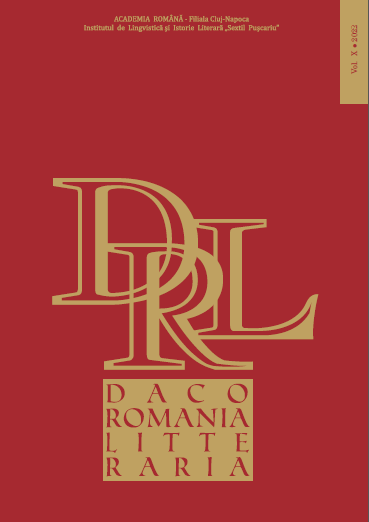Cognitive War Cartographies in Hortensia Papadat-Bengescu’s Novel
Cognitive War Cartographies in Hortensia Papadat-Bengescu’s Novel
Author(s): Alina BakoSubject(s): Language and Literature Studies, Studies of Literature, Theory of Literature, Sociology of Literature
Published by: Academia Română, Filiala Cluj-Napoca
Keywords: trauma; Romanian fiction; WWI writings; war; gender studies;
Summary/Abstract: This research endeavour is part of the study of feminine points of view on war and the manner in which they are internalized. Concepts such as “modern memory” (Paul Fussell), testimony and witness (Shoshana Felman), new methods for writing about war (Ayşe Gül Altınay and Andrea Pető) or the impossibility of narrative completion (Victoria Stewart) are employed, all of them connected to the rendition of the war experience through the female voice. The Romanian novel fulfils the generative function of creating “cognitive cartographies”. Thus, mental activity generates both the literary work and its interpretation under the form of a map represented individually by each character. The manner in which cognitive cartographies are constructed is studied in the novel Balaurul [The Dragon] (1923) by Hortensia Papadat-Bengescu, a novel that displays various key elements for our study: the war theme and short-term memory, the female internalization of war trauma, and cognitive schemes which are the result of dangerous experiences. The knowledge the reader gains is constructed under the form of a cognitive cartography made up of internal key spaces placed on a map imagined by the writer.
Journal: Dacoromania litteraria
- Issue Year: 10/2023
- Issue No: 1
- Page Range: 65-85
- Page Count: 21
- Language: English

